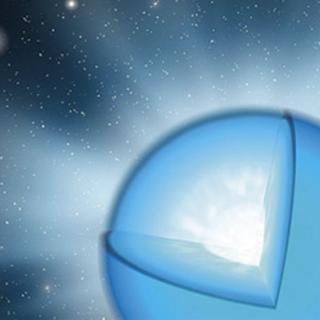Bibcode
Putkuri, C.; Gamen, R.; Morrell, N. I.; Simón-Díaz, S.; Barbá, R. H.; Ferrero, G. A.; Arias, J. I.; Solivella, G.
Referencia bibliográfica
Astronomy and Astrophysics, Volume 618, id.A174, 9 pp.
Fecha de publicación:
10
2018
Revista
Número de citas
11
Número de citas referidas
10
Descripción
Context. Most massive stars are in binary or multiple systems. Several
massive stars have been detected as double-lined spectroscopic binaries
and among these, the OWN Survey has detected a non-negligible number
whose components show very different spectral line broadening (i.e.,
projected rotational velocities). This fact raises a discussion about
the contributing processes, such as angular-momentum transfer and tidal
forces. Aims: We seek to constrain the physical and evolutionary
status of one of such systems, the O+O binary HD
93343. Methods: We analyzed a series of high-resolution
multiepoch optical spectra to determine the orbital parameters,
projected rotational velocities, and evolutionary status of the system.
Results: HD 93343 is a binary system comprised
of two O7.5 Vz stars that each have minimum masses of approximately 22
M⊙ in a wide and eccentric orbit (e = 0.398±0.004;
P = 50.432±0.001 d). Both stars have very similar stellar
parameters, and hence ages. As expected from the qualitative appearance
of the combined spectrum of the system, however, these stars have very
different projected rotational velocities ( 65 and 325 km
s-1, respectively). Conclusions: The orbits and
stellar parameters obtained for both components seem to indicate that
their youth and relative separation is enough to discard the effects of
mass transfer and tidal friction. Thus, non-synchronization should be
intrinsic to their formation.
This work is based on observations collected at Complejo
Astronómico El Leoncito, Las Campanas Observatory, and La Silla
Observatory.
Proyectos relacionados

Propiedades Físicas y Evolución de Estrellas Masivas
Las estrellas masivas son objetos claves para la Astrofísica. Estas estrellas nacen con más de 8 masas solares, lo que las condena a morir como Supernovas. Durante su rápida evolución liberan, a través de fuertes vientos estelares, gran cantidad de material procesado en su núcleo y, en determinadas fases evolutivas, emiten gran cantidad de
Sergio
Simón Díaz